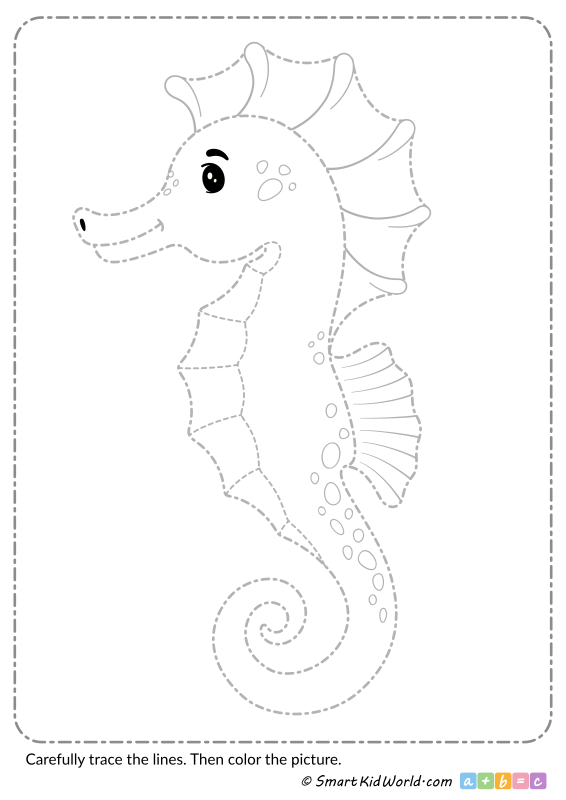Tracing lines for kids - a great introductory exercise to learning to write, with a lot of advantages that, if used incorrectly or even abused, can cause a lot of problems. ... read more
Jump to:
NEW Tracing lines worksheets
Tracing lines worksheets by TOPIC
Printable tracing lines worksheets by TOPIC
-

-
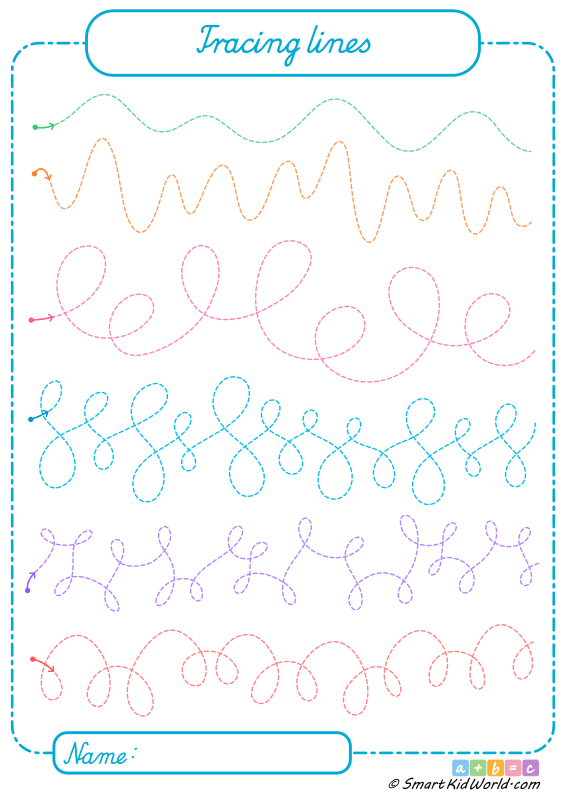
Curly tracing lines without ruling
In this part you will find twisted lines and winding paths for tracing without ruling. -
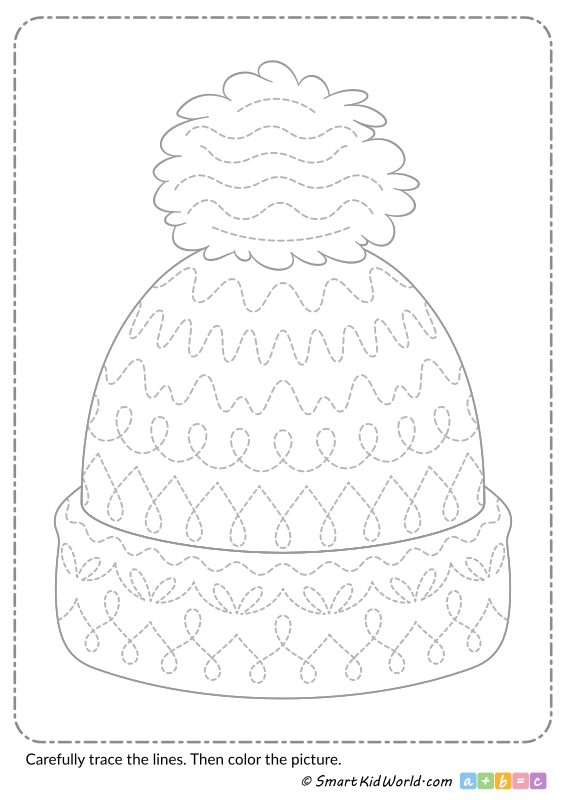
Tracing lines in pictures
To add variety, I placed tracing lines in various objects.
See also: Tracing pictures
I think we all know the tracing lines from the period of our education. Or at least most of us. It is no different with our children. Thanks to these exercises, they can work on the development of graphomotor skills, so necessary when learning to write. These include hand-eye coordination, or the ability to hold a pen or felt-tip pen correctly. But they also teach patience and concentration, so necessary that the tracing patterns does not stray too far from the designated line.
Tracing lines step by step
Both on our website and on other websites you will find various printable tracing lines, and books with ready-made patterns are available in bookstores and shops. Simple and big, complicated and small, and even themed patterns. The choice is really huge.

It is the selection of the appropriate patterns for tracing lines that is the first stage of this exercise. Why? And what does it mean appropriate tracing lines? Children start their adventure with tracing patterns at different ages and at different stages of development. Even the abilities of children of the same age can differ drastically. And tracing lines and ruling must be adapted to the child's skills. The younger it is, the less developed its graphomotor skills, the simpler and larger the patterns for tracing should be. Otherwise, the child will simply get tired, and the effect of the work will be very far from ideal, which will additionally discourage and annoy.
Another element related to learning to write is correct pen grip. Although for younger children, I definitely recommend colored markers. We liked the thick, triangular ones the best. It's easier to place your baby's fingers on them in the correct way. Which? Thumb, index and middle finger. It is important that the child does not grip the pen too tightly. Developing the skills of a light but stable grip will result in no pain during longer typing. On the other hand, gently pressing the felt-tip pen to the sheet will save many pens and nibs. Oh, I know something about it.
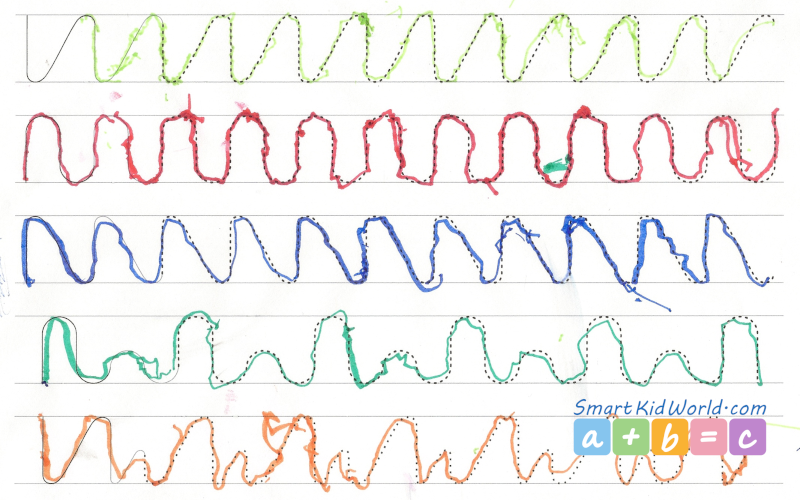
Motivation is important in practicing tracing lines for kids. This is really a very important element of the whole project. It's easy to point out mistakes. But patterns are harder to draw. Even the older generation, still trained in calligraphy, starts planting curls when they occasionally have to write something by hand. That's why we praise you for work. And for progress. Without falling into unnecessary perfectionism.
What can not be forgotten? About rest! Hands that are not trained in writing get tired quickly. Several patterns can be drawn, but if you collect several pages of them? Anyone would be outraged.
And let's not beat around the bush. Sometimes, it gets boring with the tracing lines. This is an exercise that is clearly not creative. Therefore, it is worth exchanging them for other exercises and games that will allow you to train fine motor skills in a similar way. It can be tracing pictures, coloring, drawing maps, or creating game boards and even picture stories.
Do the tracing lines always make sense?
Tracing lines can also have their dark side. Their main purpose is to support the manual development of children, but if used incorrectly, they can discourage children from exercising. Anyway, sometimes the weather is too nice or the fun is too interesting so that children do not want to cooperate with the tracing patterns.
However, there are many more reasons for the reluctance to draw patterns. Boredom comes to the fore. Patterns are not usually creative fun. If we don't want to draw them one by one, it's no wonder that children don't want to either.
The second, very important reason for reluctance is hand pain. And the hand can hurt quite a lot from just writing. Especially if the children get too many of these lines or they are not adapted to the child's abilities. Or worse, both at once!
There is a third reason that should not be forgotten. Comparing children. "Look how a friend drew these lines nicely!" You don't even need to add "Look at yours! What scrawls!” Depressing, right? Most people will not be motivated to work harder on self-development after such a comparison. Rather, they will turn on their heels and find a better activity!
Learning to write in the era of computers, tablets and smartphones
How often do we use handwriting today? I quite often write short notes and draft versions of articles and worksheets on a piece of paper. But everyone has to answer this question for themselves. Perhaps you know people who only hand-sign a few times a year. Such a reality that we type much more often on the keyboard than write on paper.
It will be the same with our children. Handwriting is disappearing, so why keep teaching it to children? Wouldn't it be better to include learning how to type quickly on the keyboard in the teaching system? One does not exclude the other.
Why is learning to write still an important stage in children's development? It was neuroscientists who provided us with a lot of evidence that handwriting positively affects brain development. It is a stronger activator than typing, making handwritten or drawn works more creative, richer in detail and a variety of vocabulary. The more we stimulate areas in the brain responsible for tactile sensations, the faster we encode new information and associate facts. Therefore, special emphasis on sensorimotor exercises is placed when working with children with dyslexia or with special needs.
Tracing patterns for adults
I have to mention one more use of tracing lines here. Like coloring books, they can also be used by adults. Not necessarily to relieve stress, but, as in the case of children, to exercise fine motor skills. For various reasons, we lose the confidence of the grip or the efficiency in using tools. Usually, such problems are related to diseases or old age. However, with regular exercise, we can delay the undesirable effects. And sometimes even undo them.
A little hint. I received the information from a person who works with adults during rehabilitation, among other things, by practicing their motor skills. Not everyone was delighted with our signature at the bottom of the worksheet. Some even refused to perform exercises intended for children.
Latest tracing lines worksheets for kids
-
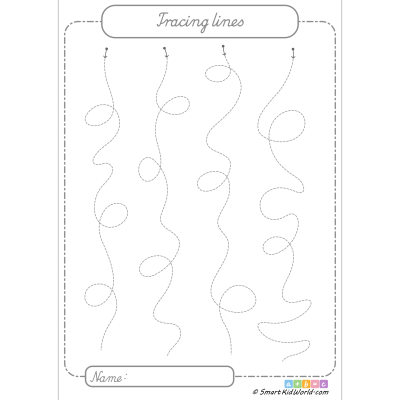
Loops and swirls – tracing lines for kids
Today we draw in a completely unusual way. Not only is there no ruling, but it is also vertical. For variety, I offer vertical tracing lines for kids that don’t have to fit into the designated track.
-
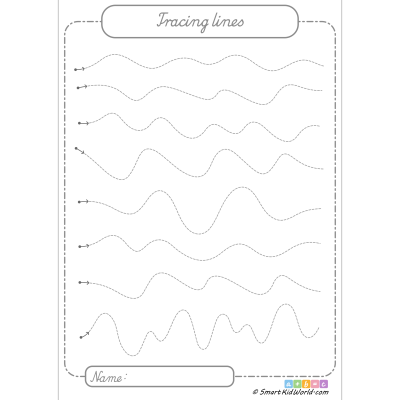
Irregular waves and curves – tracing lines for kids
Waves, hills and valleys. Today we will draw very uneven lines along the trace. Some are slightly disturbed, others are completely bent.
-
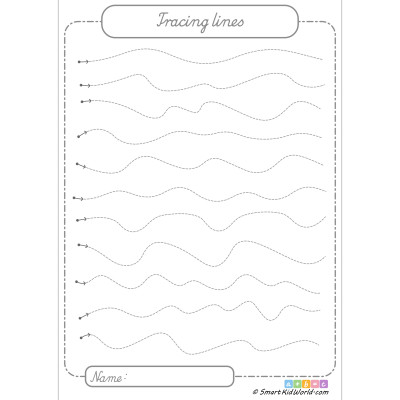
Irregular waves and curves – tracing lines for kids
There were already loops and swirls. This time we will play with waves and curves. A slightly simpler form of curved tracing lines for kids.
-
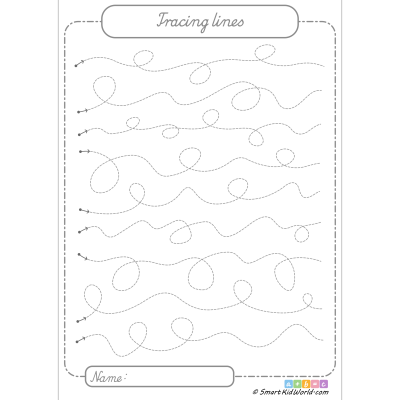
Loops and swirls – tracing lines for kids
Tracing loops continued. Today I prepared another worksheet containing tracing lines for kids with looped patterns.
-
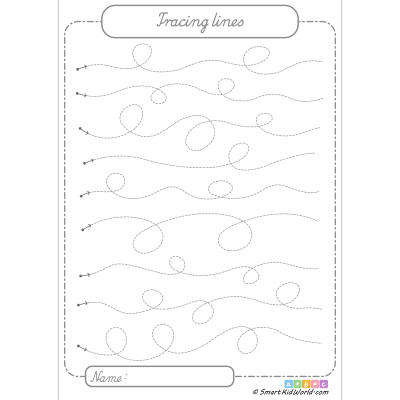
Loops and swirls – tracing lines for kids
We loop again. We will again draw crazy loops and swirls without rulings with the children.
-
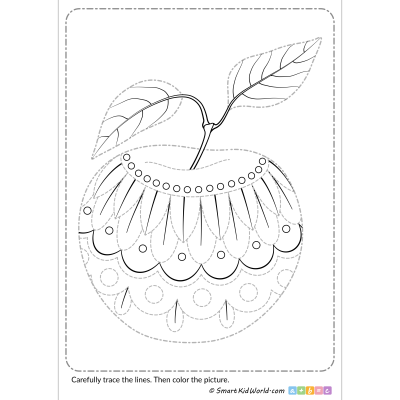
Mandala apple – tracing lines for kids in pictures
We like apples! Doodling and sketching, I created a design of an apple covered with twisted patterns, like a mandala. I decided to use it as a printable coloring page, and as a graphomotor exercise for tracing lines for kids.
-
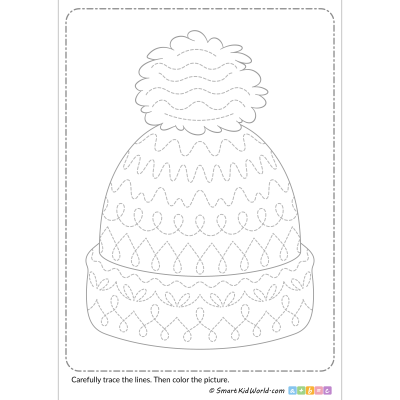
Winter hat – tracing lines for kids in pictures
Referring to the earlier mittens with tracing lines in the pictures, I have prepared another winter drawing for kids to trace along the lines – a winter hat with a pompom.
-

Loops and swirls – tracing lines for kids
Do all tracing lines have to be in the ruling? Sure not! Today’s tracing patterns are a version without ruling, i.e. without auxiliary lines. By the way, they are not equal either.
-
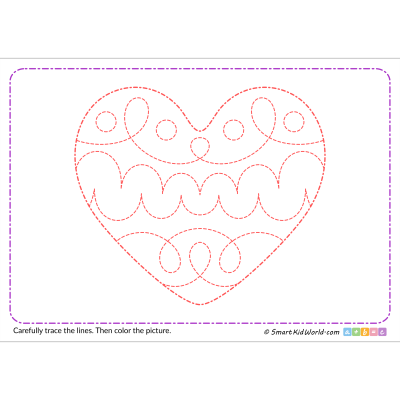
Heart – tracing lines for kids in pictures
Just before Valentine’s Day, I decided to use the heart symbol to create new tracing lines for kids. Some loops, some arcs, some circles, and of course a heart.
-
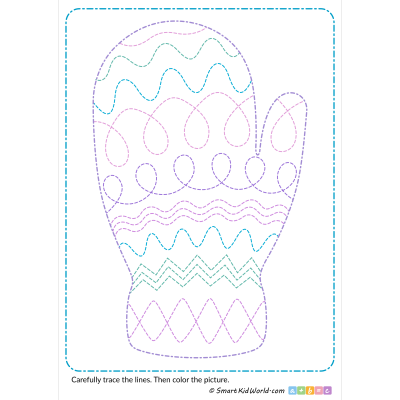
Winter mittens – tracing lines for kids in pictures
Recently, I got my hands on colorful children’s winter gloves. Thanks to them, mittens for tracing lines were created, filled with colorful patterns.
-
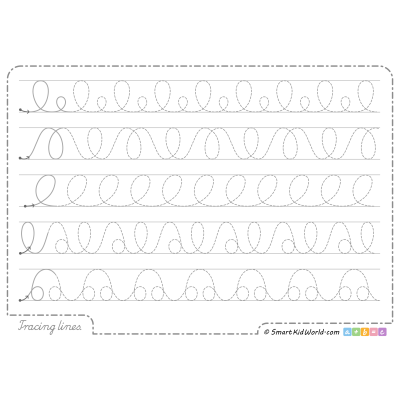
Tracing lines for preschoolers 7
I’m giving you today a set of large loops and bows, belonging to the series of exercises tracing lines for preschoolers.
-
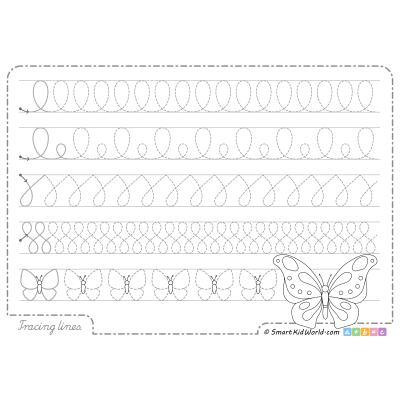
Tracing lines for preschoolers 6
As the leitmotif of today’s tracing lines for preschoolers, all kinds of loops are back.

